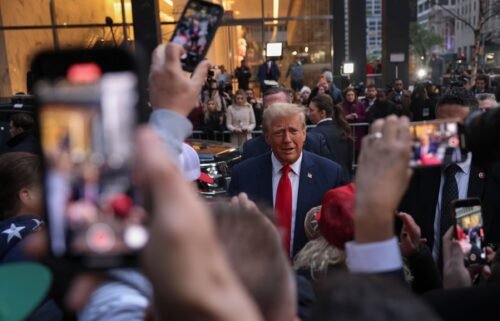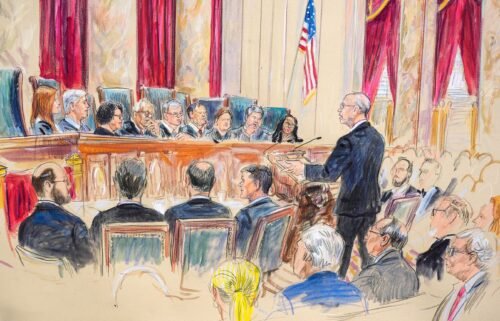As year-end approaches, vaccine rollout remains woefully behind schedule

With just a few days left in the year, alarm bells are going off among health officials across the country over the slow effort to administer tens of millions of doses of Covid-19 vaccine by the end of the year.
The federal government’s Operation Warp Speed had promised that 20 million doses would be administered before January 1. Yet the latest data from the Centers for Disease Control and Prevention shows that just over 11 million doses have been distributed, and only 2.1 million have actually been administered to people.
Despite being an order of magnitude behind their self-imposed pace, and almost certain to miss their year-end numbers, Trump administration officials tell CNN that vaccine distribution is on track and blame the gap on a lag in reporting data.
A senior administration official told CNN that distribution was right where they’d expected it to be. This official stressed that there was no lag on reporting the number of vaccines that had been shipped, although there is a lag in reporting doses administered.
According to the CDC, health care providers report doses to public health agencies up to 72 hours after they’ve been administered. There may be an additional lag for data to be transmitted to the CDC.
The CDC’s dashboard, which is currently being updated Mondays, Wednesdays and Fridays, says that a large difference between the number of doses distributed and the number administered is expected at this point in the Covid vaccination program.
In a statement to CNN, Michael Pratt, Operation Warp Speed’s chief communications officer, said, “Operation Warp Speed remains on track to have approximately 40 million doses of vaccine and allocate 20 million doses for first vaccinations by the end of December 2020, with distribution of the 20 million first doses spanning into the first week of January as states place orders for them.”
But Dr. Anthony Fauci threw cold water on the notion that distribution of the vaccine is on track, telling CNN’s Jim Sciutto on Tuesday morning that the US is “certainly not at the numbers that we wanted to be at the end of December” when it comes to the quantity of Covid-19 vaccines administered.
“Even if you undercount, 2 million as an undercount, how much undercount could it be?” Fauci said. “So we are below where we want to be.”
President-elect Joe Biden called out the Trump administration Tuesday over the slower-than-expected pace of vaccinations while laying out his own approach for speeding up the vaccine process through greater involvement from the federal government.
“As I have long feared and warned, the effort to distribute and administer the vaccine is not progressing as it should,” Biden said in remarks in Wilmington, Delaware. “If it continues moving as it is now, it will take years, not months to vaccinate the American people.”
Speaking on CNN on Monday, Dr. Celine Gounder, a Covid-19 adviser to Biden, lamented the pace at which people were being vaccinated, saying the country needed to be vaccinating 1 million people every day, not every week.
“It would take us over a decade to vaccinate all Americans with the Pfizer and Moderna vaccine, so that’s clearly not an acceptable pace,” said Gounder.
Reasons for delays
Dr. Georges Benjamin, executive director of the American Public Health Association, laid out three major reasons for issues around distribution: vaccine supply, inadequate infrastructure and communication.
On vaccine supply, Benjamin said, the US does not have what it needs to vaccinate the roughly 330 million people who will need it. Current numbers show the US has about 11.4 million doses on hand, and administration officials have said to expect 20 million doses on hand by early January. This is significantly lower than had originally been promised by the administration, which was touting 100 million doses by the start of the year.
“We need to ensure we have a robust production capacity. The federal government can assist here. I don’t know why we don’t have the 100 million we were originally expecting. Remember it is not just the need to produce the vaccine, but it also includes all the component parts, including vials, stoppers, needles, etc. The Defense Production Act can help with this, as well as sound federal leadership,” Benjamin told CNN.
Transporting and storing the vaccine is complicated and the ultra-cold delivery chain is not one that has been used in the past. Just learning and getting used to the system can delay vaccine administration and worse.
About 500 doses of Moderna’s Covid-19 vaccine had to be discarded on Saturday at the Aurora Medical Center in Grafton, Wisconsin, due to a storage error, according to a spokesperson for the facility.
“We learned that about 50 vials of Moderna vaccine were inadvertently removed from a pharmacy refrigerator overnight,” according to a statement from the medical center. “Our internal review determined that as a result of unintended human error, the vials were not replaced in the refrigerator after temporarily being removed to access other items.”
Benjamin, along with former administration officials and health care workers CNN spoke to, said the communication around vaccine distribution needs to be more clear to address the public’s understanding of the vaccine’s safety and efficacy.
Biden’s dilemma
With Biden set to take office in three weeks, the bulk of vaccinations is expected to take place under his watch, marking one of the early tests of his administration. In his coronavirus remarks Tuesday afternoon, he laid out his plans to ramp up the pace of administering vaccines.
“This is going to be the greatest operational challenge we’ve faced as a nation, but we’re gonna get it done,” Biden said.
The President-elect has set a goal of administering 100 million doses in his first 100 days in office, and on Tuesday, unveiled the first concrete steps he’d take to help make that a reality, including embracing a more federalized approach to the vaccine process than the Trump administration.
Biden said his administration would help set up mass vaccination sites and send mobile units into communities that are hard to reach. The President-elect said he would use the Defense Production Act to ramp up vaccine production.
His administration would launch a public education campaign to promote the safety of vaccines, particularly among Black, Latino and Native American communities, which have expressed hesitancy about the vaccine.
Earlier this month, Biden expressed concern about the status of vaccination plans provided by the outgoing administration. “There is no detailed plan that we’ve seen, anyway, as to how you get the vaccine out of a container, into an injection syringe, into somebody’s arm,” Biden said at a December 4 event in Wilmington.
They’ve also been speaking with former administration officials, hospital networks and members of the medical community on how to tackle the enormous task ahead. They’ve also been in regular contact with state and local officials to gauge their needs in administering the vaccine, including items like funding for state and local governments and additional staffing.
“I think they’re very cognizant that the federal government will have to play a much more active role in not just the development of the vaccine, but the actual administration of it,” said one state official in touch with the Biden team.
“The state health departments are stretched to the absolute max fighting Covid, doing testing. County and local are in the same boat,” the state official said. “It’s not just the scale of the vaccine operation but putting that on top of what states are already dealing with”
According to Benjamin, who has been in talks with the transition team, a more nationalized response could be the answer.
“This requires leadership and coordination at the federal level,” he said. “The use of targeted use of the Defense Production Act to address production roadblocks and regulatory barriers. A stronger federal, state and local partnership is also needed for coordination. The Biden administration can address this by providing the leadership, strengthening the delivery infrastructure and enhanced communication.”
But some health officials are concerned that changing the process in the middle of the distribution could do more harm than good.
This story has been updated with Biden’s remarks on Tuesday afternoon.

